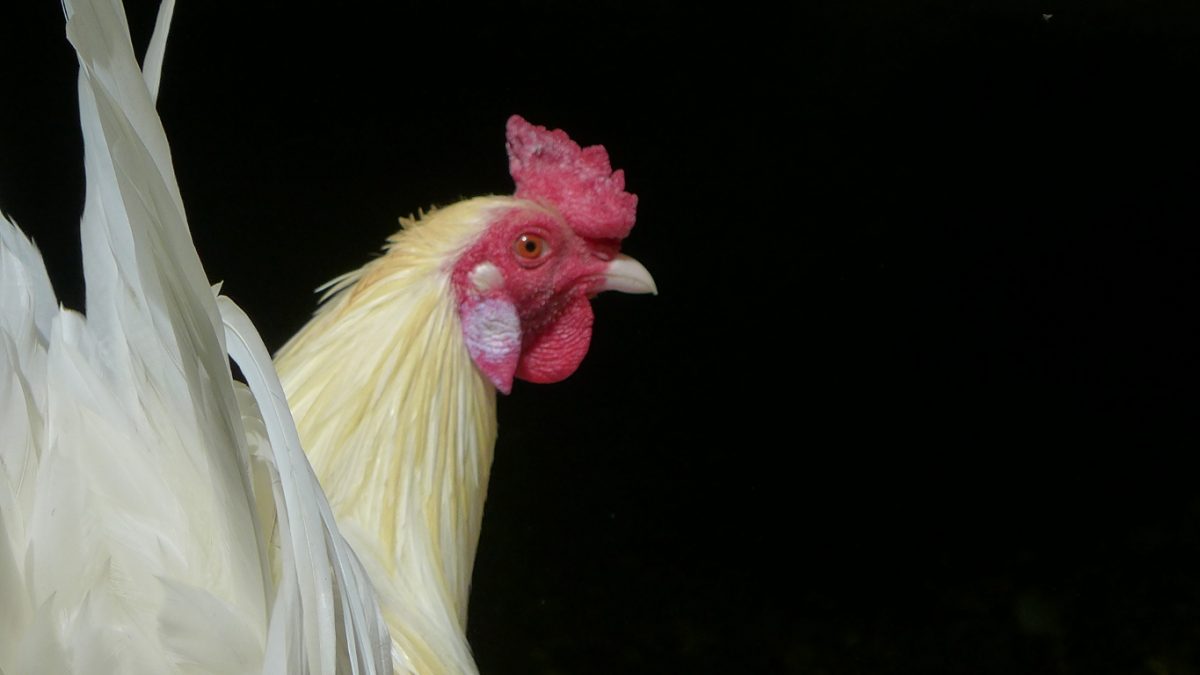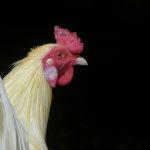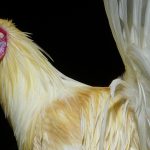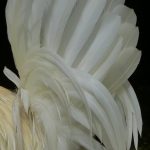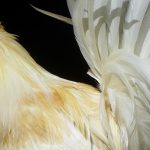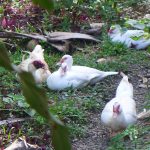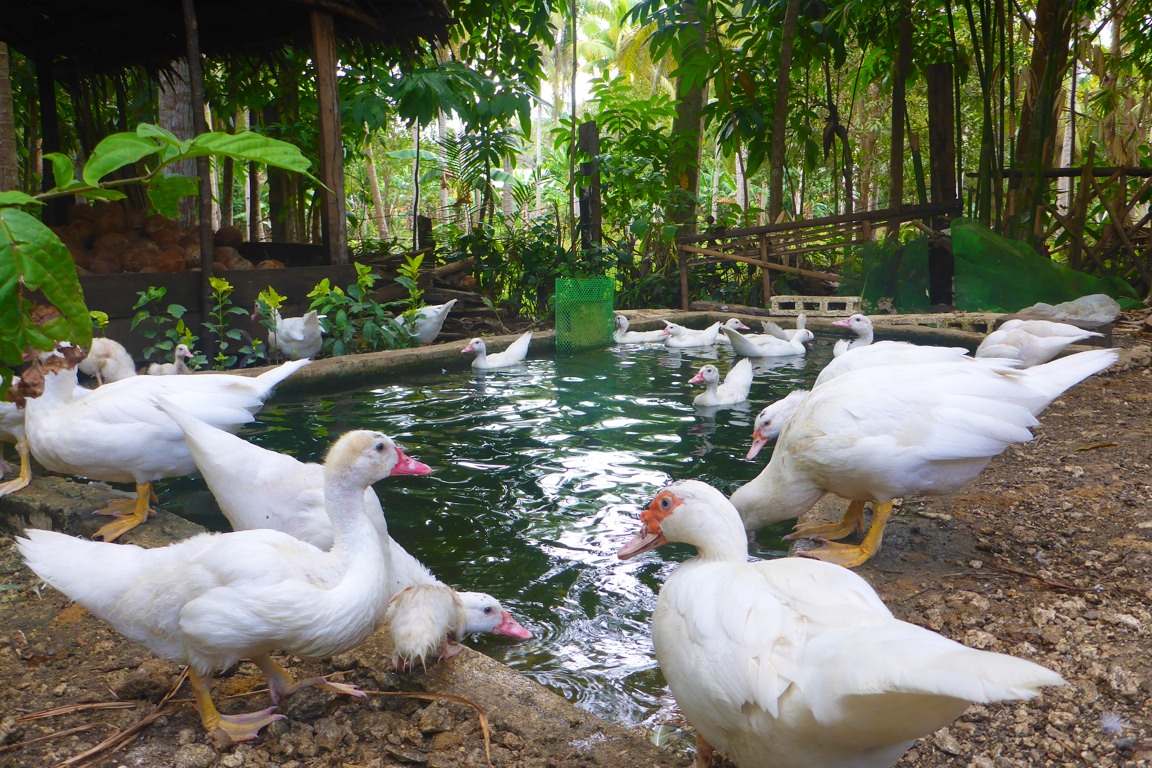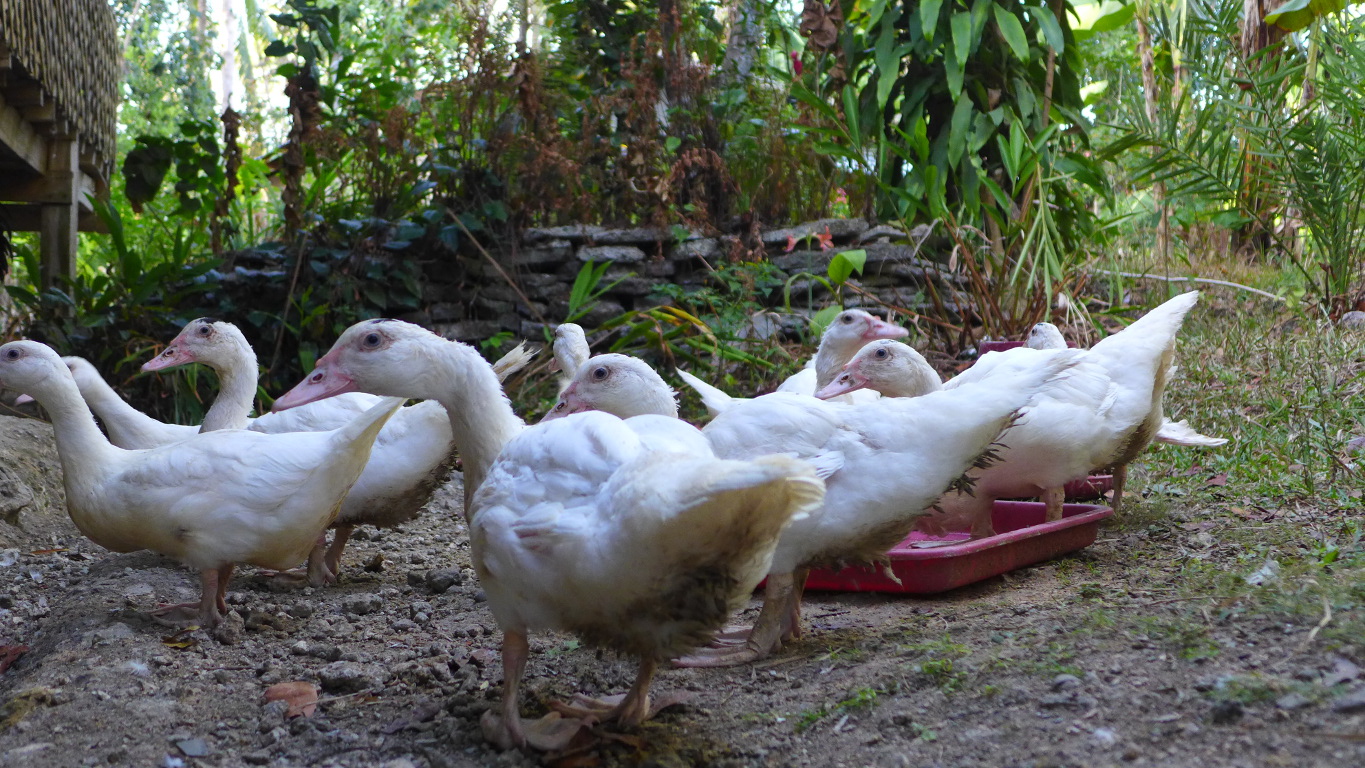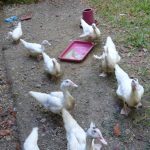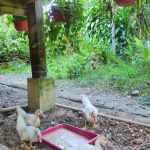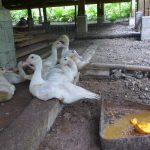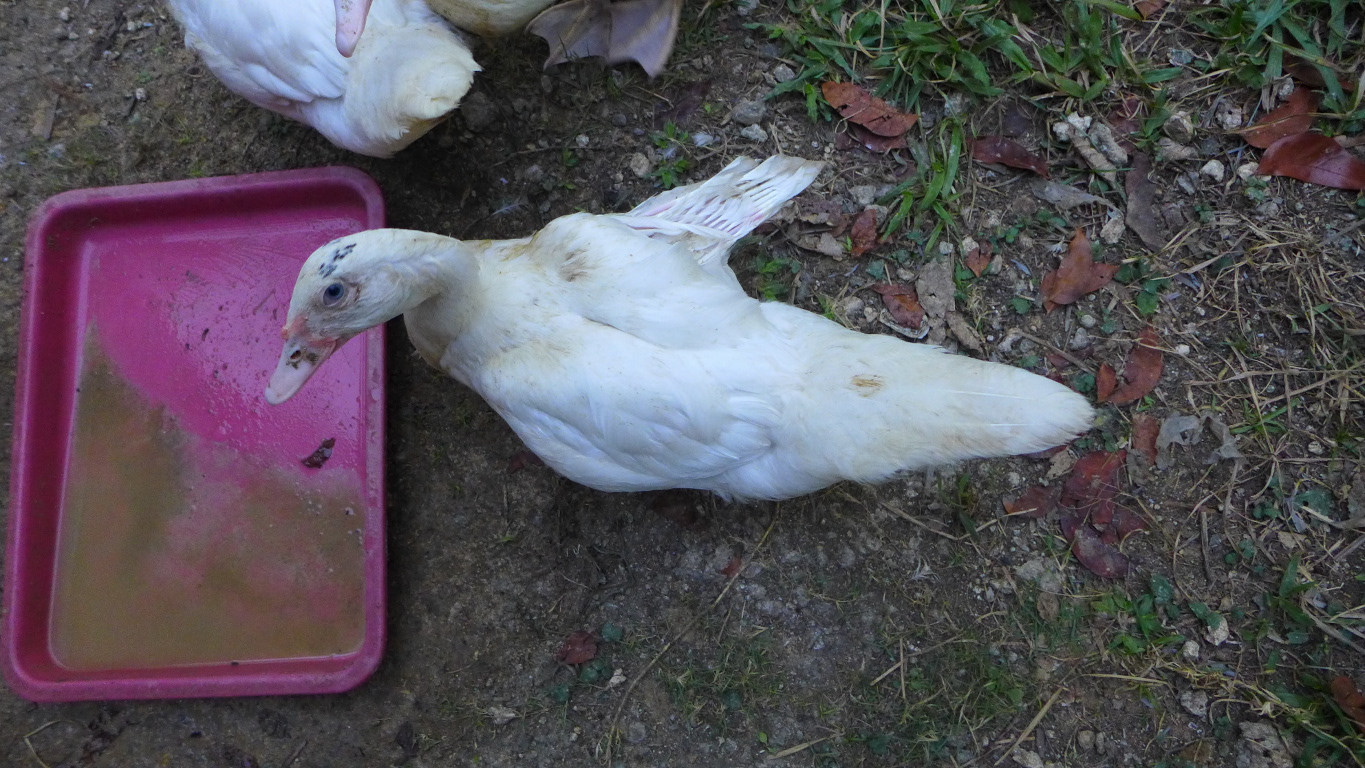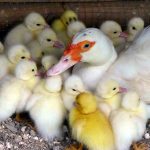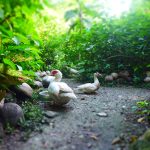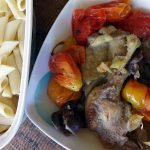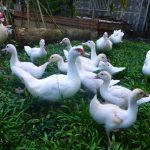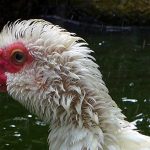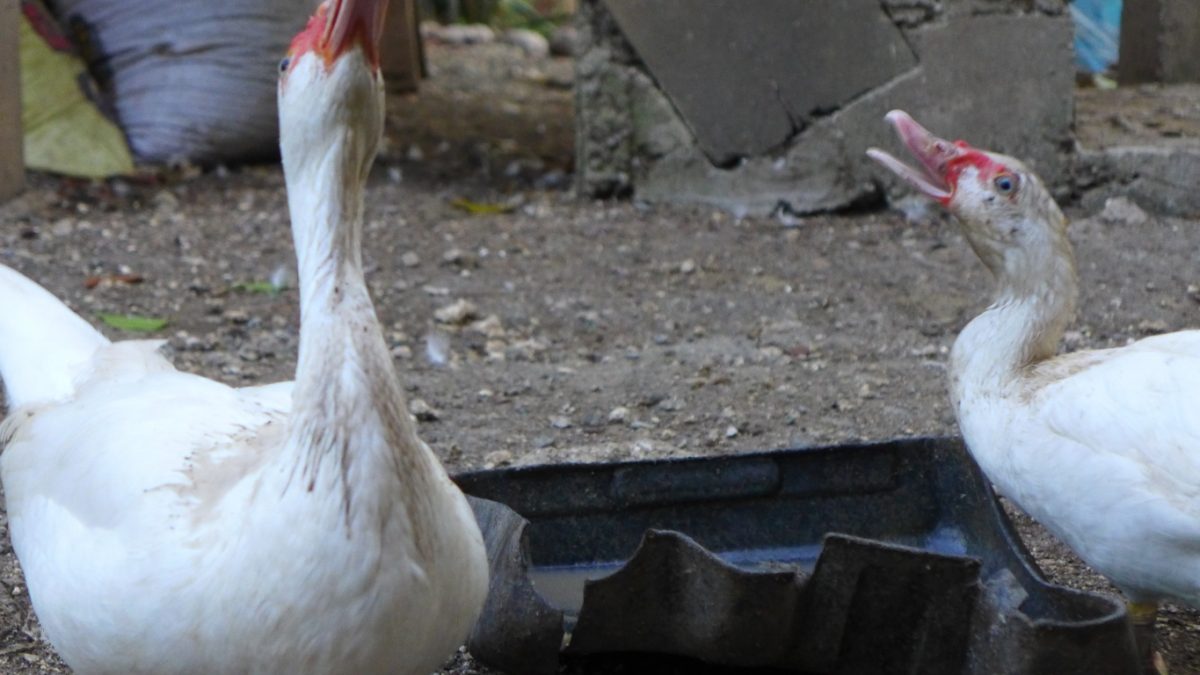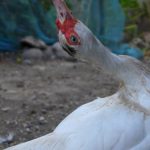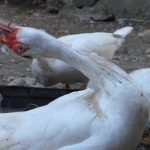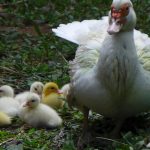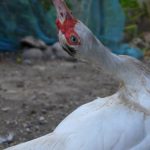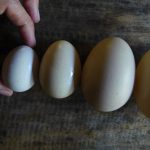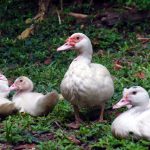Our neighbour has a large kabir hen. They want to breed it. Someone gave them a native rooster. But the kabir hen was so big that it frightened the rooster. So our neighbour asked to borrow our rooster. I decided to lend them one of our red native roosters. It was a reasonably large rooster. But the kabir hen intimidated it. Our neighbour asked to borrow our white rooster.
Now this white rooster is My Rooster. It’s a big mature rooster with huge spurs. I agreed to lend my white rooster. Here he is with the kabir hen.
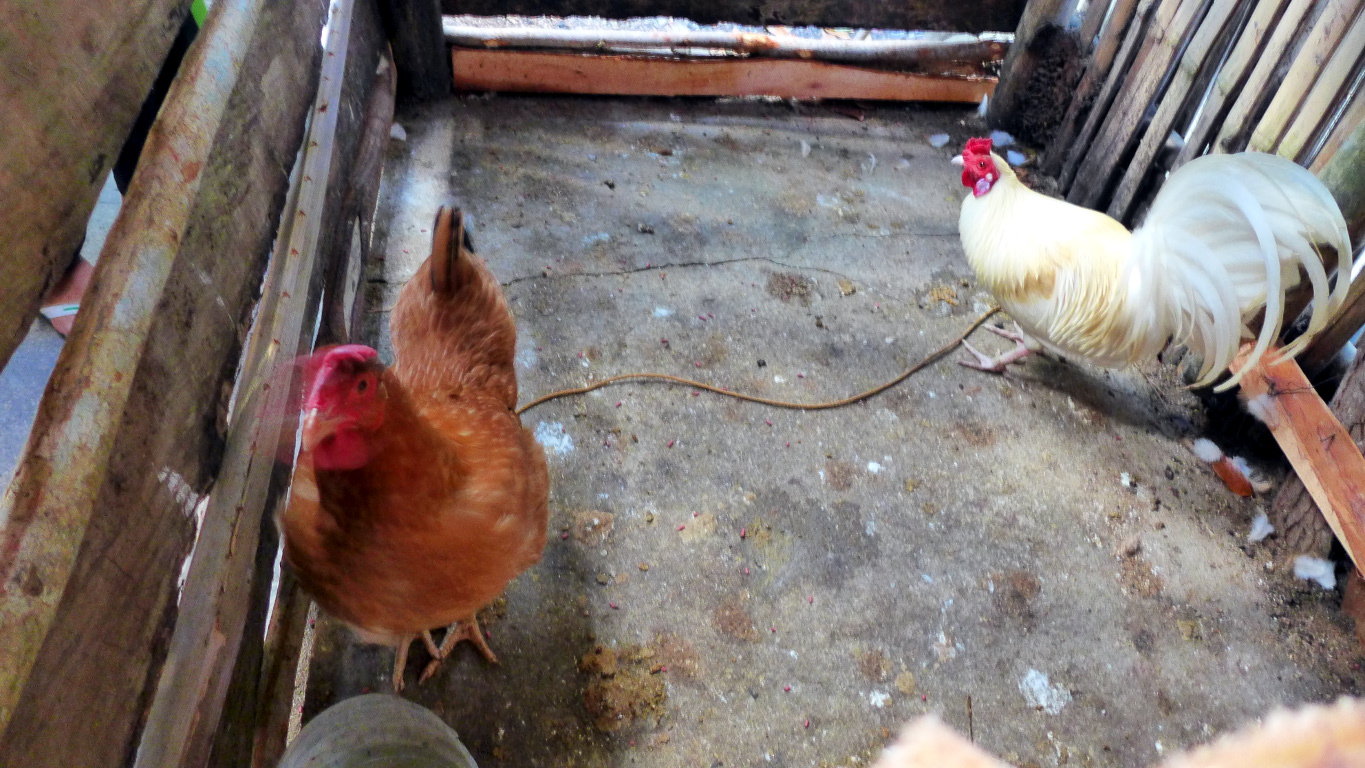
After several weeks nothing happened. As it turns out, the kabir hen is just too large such that it wasn’t possible for any native rooster to mate with it. What a pity! So now our neighbour will slaughter the kabir hen for a birthday on June 4.
Here are some photos of my favourite rooster.
We breed native chickens for meat. In March and April we sold a fairly good number of native chickens we’ve raised wondering about in the backyard. March and April was graduation month and fiesta in a few places. We also sold a pig for someone’s graduation party.
We keep a couple of roosters for breeding. We don’t keep roosters for cockfighting. The very first time I witnessed a cockfighting derby was last week on Pamilacan Island. They were having their village fiesta and cockfighting was one of the special events. I was able to take a couple of videos.
I personally don’t know what to feel about cockfighting. I’ve seen roosters fighting as they often do in nature. It is bloody, violent, deadly. But it takes hours. And of course, before the fight becomes deadly, the rooster is free to run away — unless they were tied up as they often are to prevent them from escaping or getting stolen.
In a cockfighting derby, because of the frighteningly sharp steel spurs attached to the roosters’ legs, the fight only takes a few seconds, sometimes a couple of minutes. Sometimes the losing rooster dies, sometimes it lives to fight again another day. At the Pamilacan Island derby, there was a veterinarian tasked to provide care for wounded or injured roosters. Perhaps for people too!
PS. Cockfighting in the Philippines is regulated by law.
